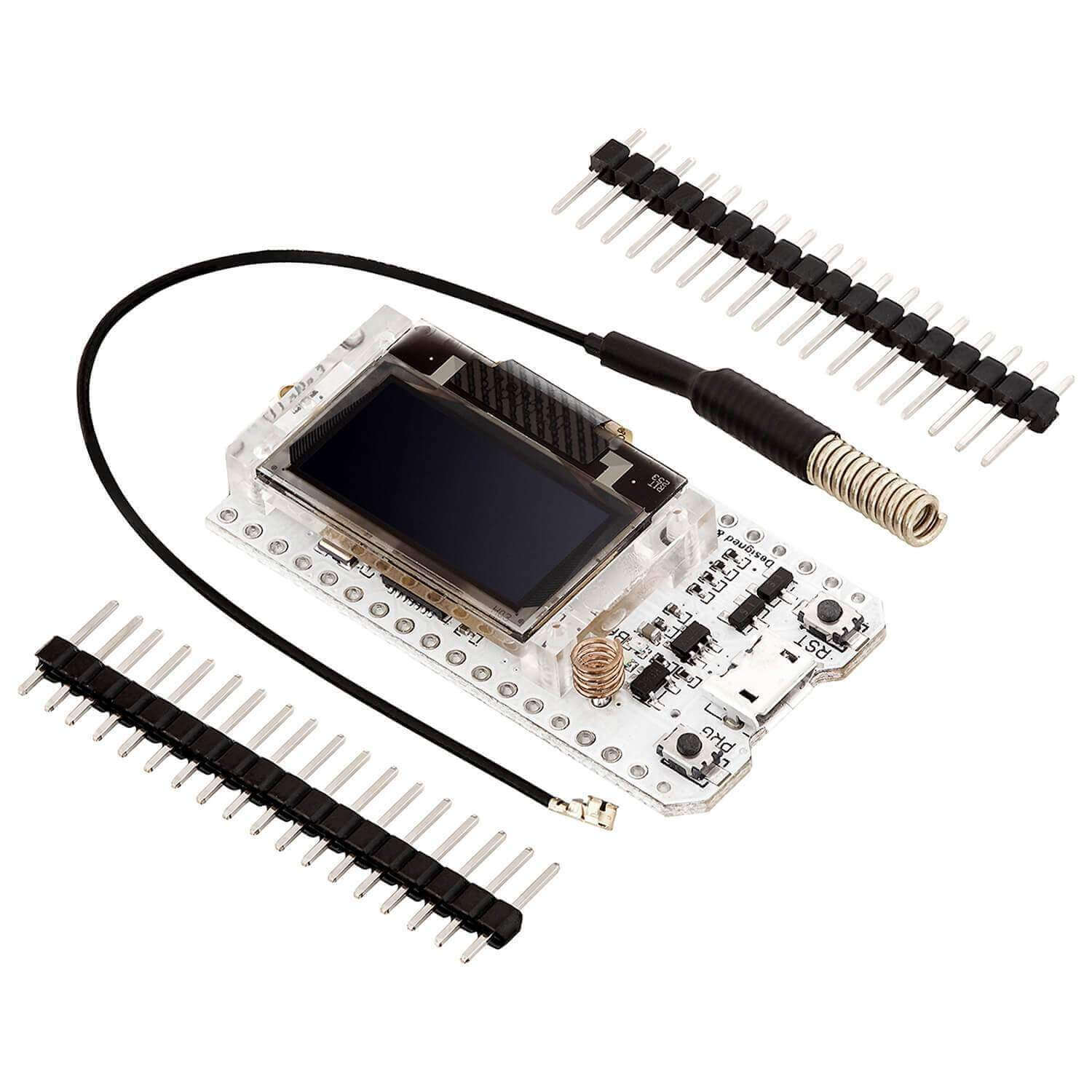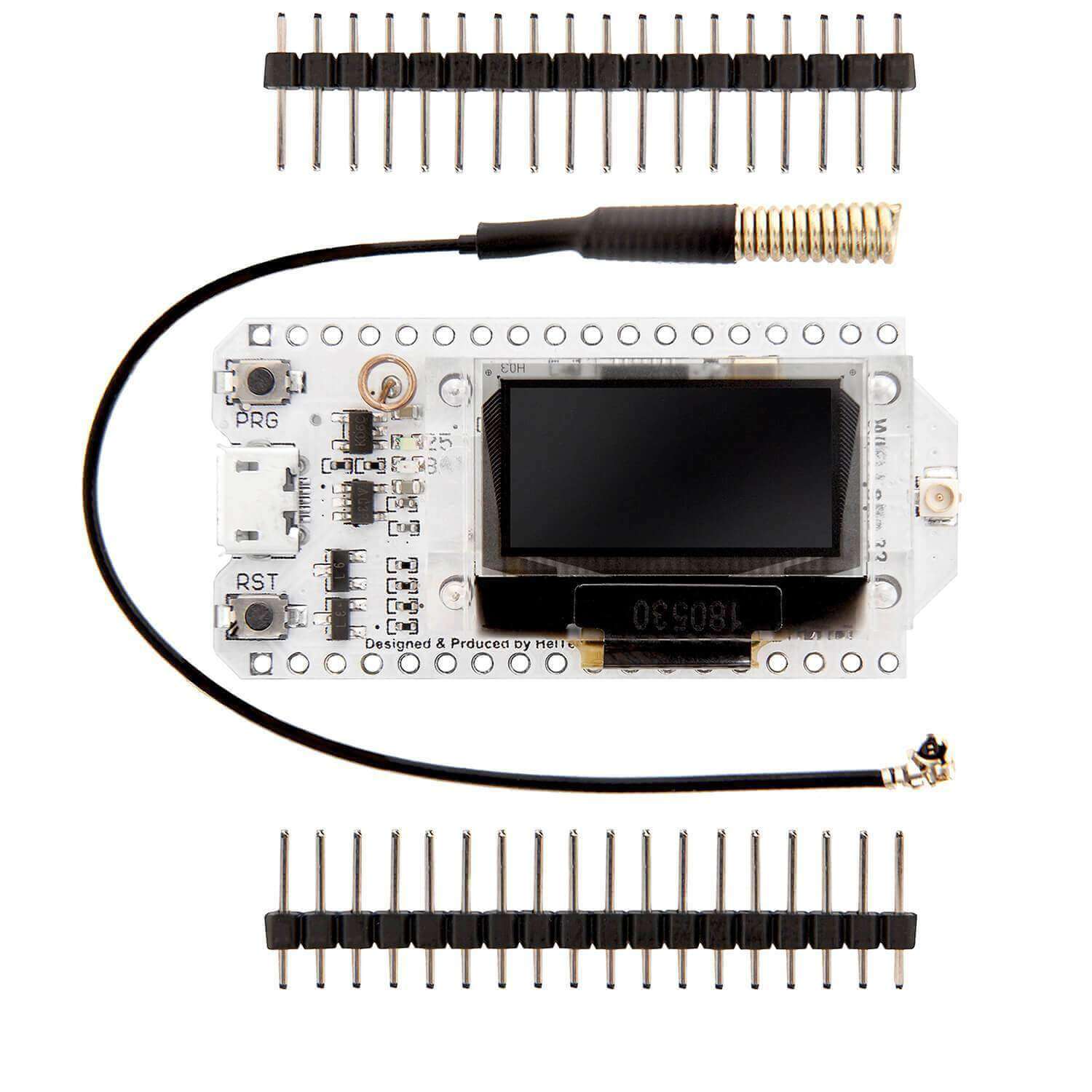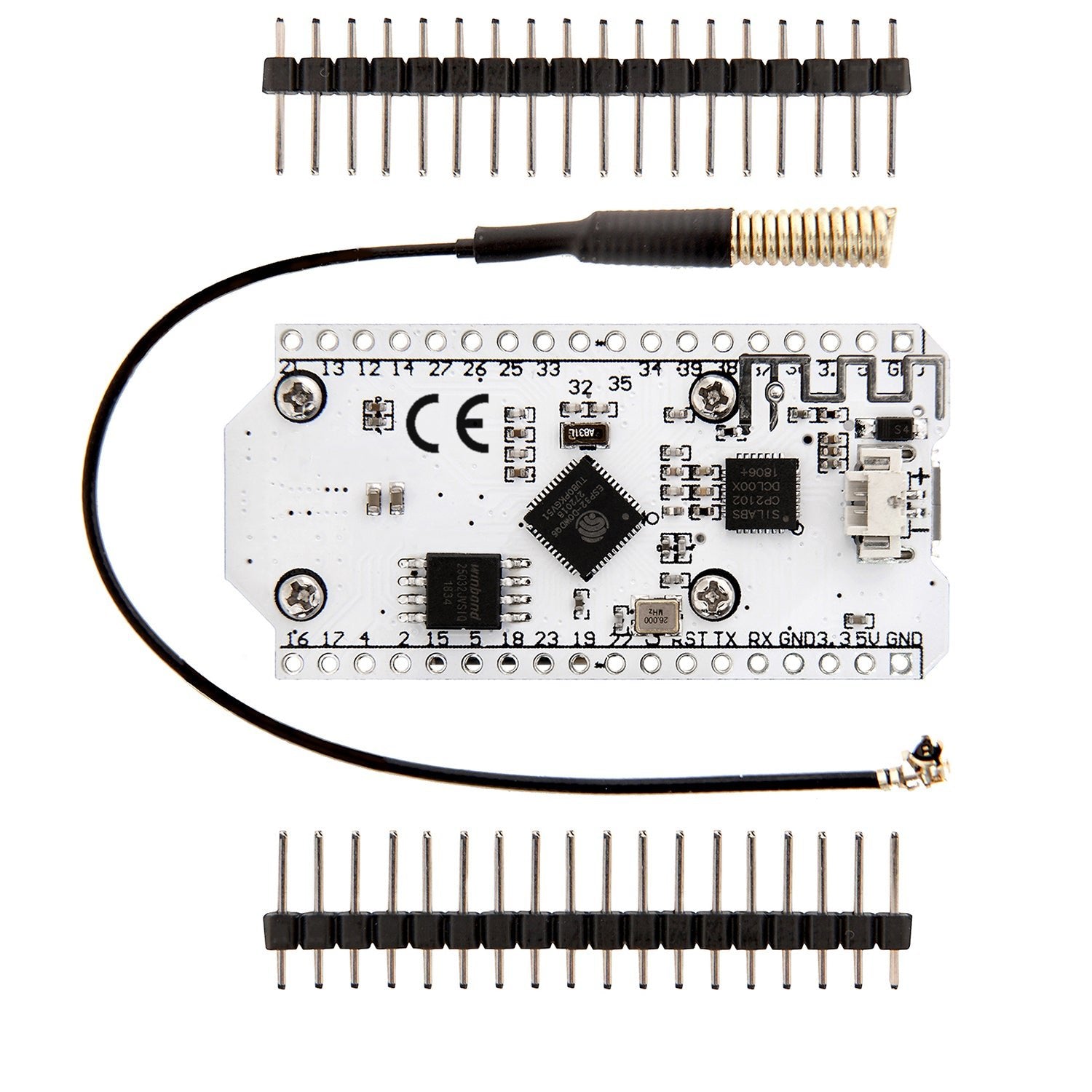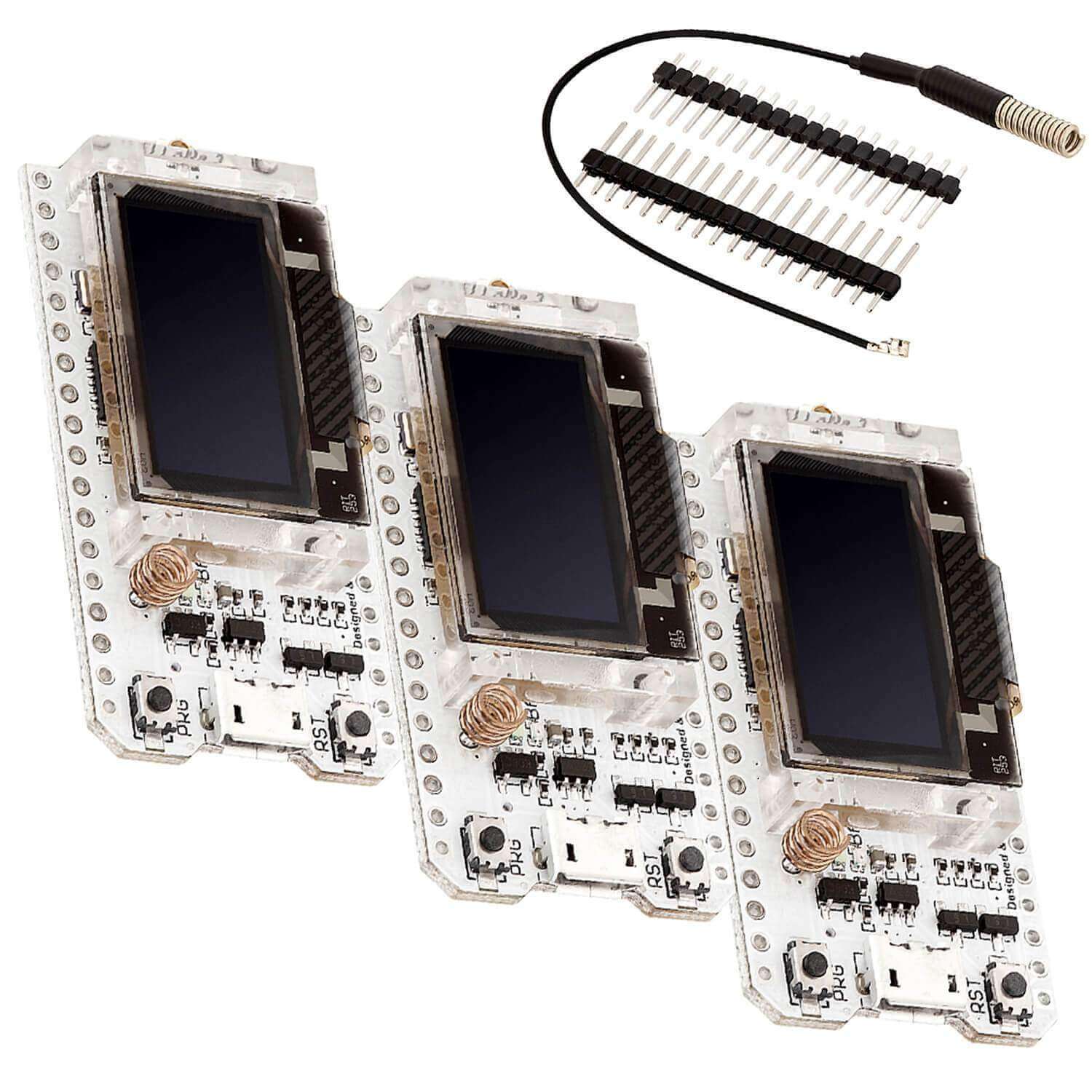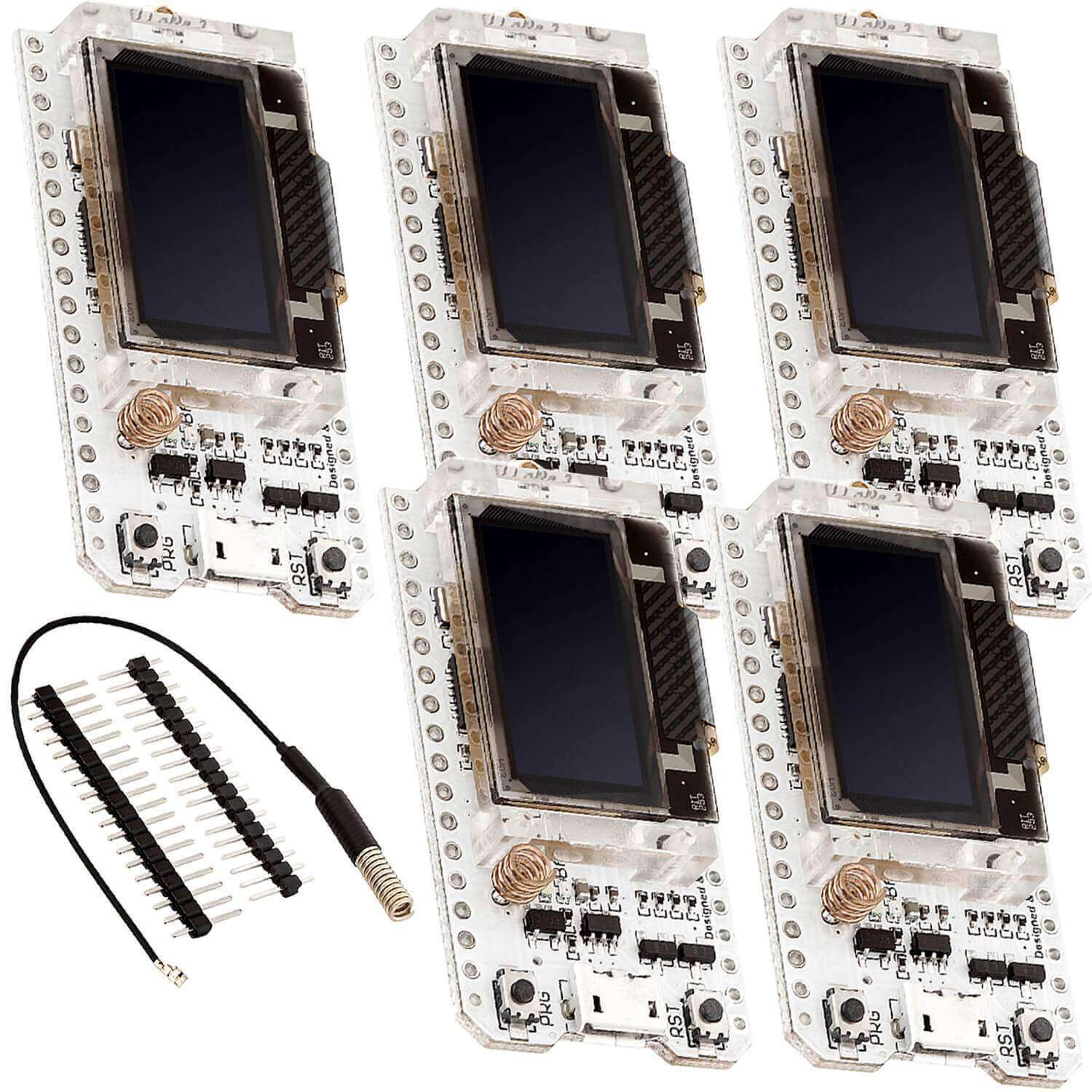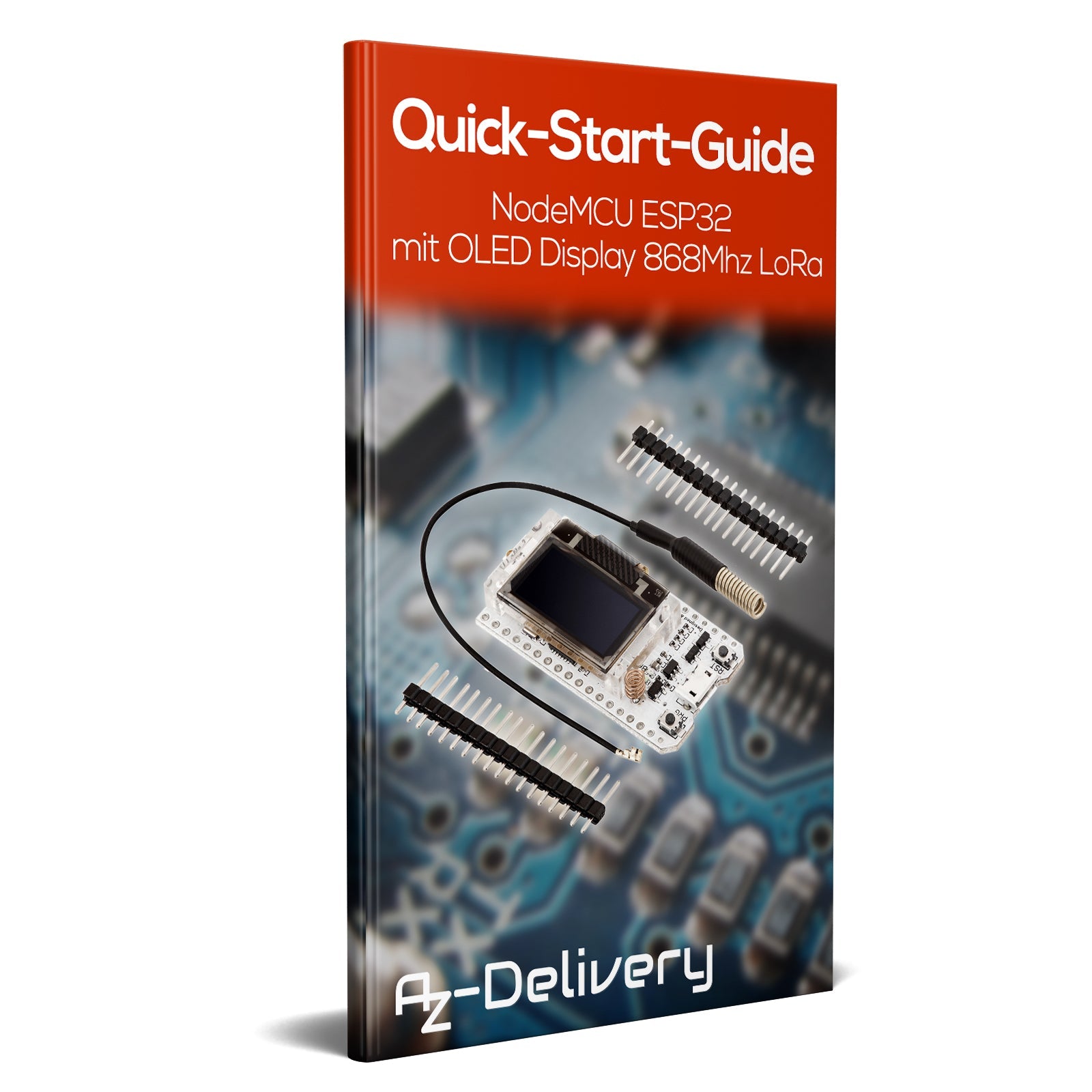Description
The NodeMCU ESP32 with OLED and LoRa is a highly versatile development board tailored for sophisticated IoT applications. Merging critical wireless technologies like WiFi and Bluetooth, including the power-efficient BLE, this board stands as an exemplary choice for projects that require extensive wireless connectivity. The inclusion of LoRa technology positions it perfectly for tasks that demand long-range data communication.
The board's 0.96-inch OLED display serves as a window into your project, providing a clear and immediate visual representation of data or system status. This is especially beneficial for debugging or monitoring ongoing processes. Furthermore, the board’s adept handling of Li-Po batteries assures stability and efficiency in power management, making it highly suitable for mobile applications or projects in remote locations.
The comprehensive package, complete with two sets of pin headers, pin labels, and an external antenna, ensures a smooth start and ample flexibility in a wide array of applications.
This WiFi Kit 32 is an all-encompassing solution for a diverse range of IoT projects, from home automation systems to intricate sensor networks. Its combination of multiple wireless technologies, ease of use, and practical design makes it an ideal choice for anyone looking to delve into the world of IoT, be it for educational, hobbyist, or professional purposes. As always, the package includes an E-Book that offers a wealth of information to help you kickstart your project, providing a quick setup guide and saving time on the configuration process.
Note on the product variant: This is the 868 MHz version, not a LoRaWAN-certified end device.
